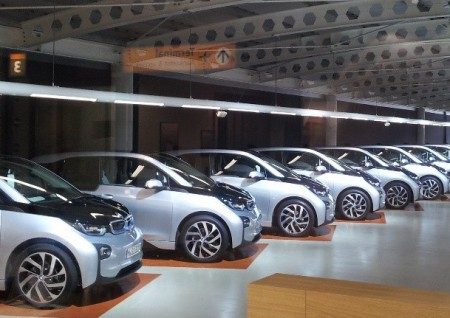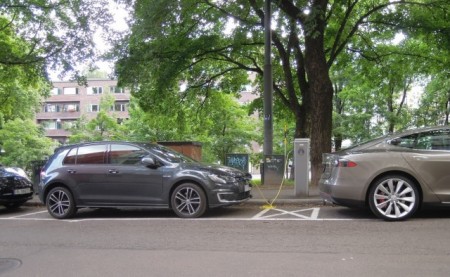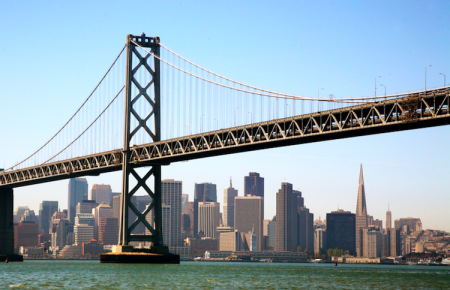April 25, 2016 – A big ship takes a long time to change direction starting from the senior officer at the helm requesting a route alteration to the rudder and engines finally making the course correction. When RMS Titanic attempted to avoid the ice berg that sank it, the ship altered its course as much as a a mile away after first sighting and yet still couldn’t avoid the collision.
Applying this analogy to climate change we, today, are witnessing the first attempts at course corrections by countries and cities who see global warming looming ahead. Here are some examples:
Holland Proposes Ban on Gasoline and Diesel Car Sales
The Netherlands is the second European jurisdiction after Norway to propose banning the sale of cars powered only by gasoline and diesel fuel. The legislation passed by the Dutch Parliament has proposed a deadline of 2025 for the phase out. The Netherlands are not alone. Norway adopted a similar end date for fossil-fuel powered vehicles and are further down the path. In The Netherlands the sale of hybrid vehicles after 2025 will remain and existing fossil-fuel powered vehicles will be allowed on the country’s roads until the end of their lives. But after that no more internal combustion engines to pollute the air and contribute to climate change.
Reaction within the country is not all positive with the Dutch Senate expected to put up a fight before the legislation gets final approval. And after the Senate the challenge may come from the European Union (EU) where vehicles meeting the community’s emission standards by law cannot be banned by any member nation. Norway’s legislation as a non-EU member is unaffected.
The Netherlands’ vehicle target is to have 200,000 electric vehicles (EVs) on its roads by 2020. Today about 15% of all new sales are hybrids or EVs, disproportionately higher than any other EU country. The Netherlands attributes this relative success to the high cost of gasoline and diesel, and very short commutes because of the size of the country favoring range-limited electric cars.
In Norway today one in 5 new vehicles purchases are EVs. Sales have been doubling every year. Why? Because EVs are given right-of-way and parking privileges. Owners pay no road tax, sales tax or value-added tax. They can drive in restricted bus lanes. They get ferry transport for free and there is no cost to use public charging stations.
San Francisco to Put Solar on All New Building Roofs
The course correction in San Francisco is of a different nature. A new law to become effective on January 1, 2017 is attempting to steer the city to focus on roofs, not cars.
Why not cars?
Today California is the EV capital of the United States. There are more than 200,000 plug-in vehicles on the states’ roads. Sales are growing with companies like Tesla doing major research and development and manufacturing within the state. So on this front San Francisco is well on its way.
But the city has another goal, to provide all its energy requirements using renewables by the next decade. New legislation just passed states that focusing on solar roof installations is “reasonably necessary because of local climatic, topological and geological conditions.”
In San Francisco there are no climate change deniers in the legislative process. The language of the bill describes the city as “vulnerable to sea level rise, and human activities releasing greenhouse gases into the atmosphere.” That the city “is already experiencing the repercussions of excessive CO2 emissions.” That “some people, such as the elderly, may be particularly vulnerable to higher temperatures resulting from climate changes.” And that “installing solar will help San Francisco meet its goal…to have a greenhouse gas-free electric system by 2030 and to reduce greenhouse gas emissions citywide to 40% below 1990 levels by 2025 and 80% by 2050.”
Builders and building owners, therefore, are required, states the legislation “to take steps to reduce the energy consumed by inefficient building operations and produce renewable, low-carbon electricity, or capture solar heat, in order to reduce pollution, benefit biodiversity, improve resilience to climate change by reducing localized heat islands, and reduce the global warming effects of energy consumption.”
In San Francisco, The Netherlands and Norway these new policies represent small course corrections in the direction our global ship is heading. Alone they cannot mitigate against the climate change ice berg threat that lies ahead for the entire planet.
What we will need is many more members of the global cast, cities, states and nations, creating similar policy to further the course corrections that can steer the world into safer waters in the decades to come.











